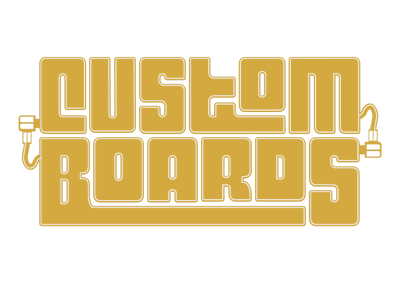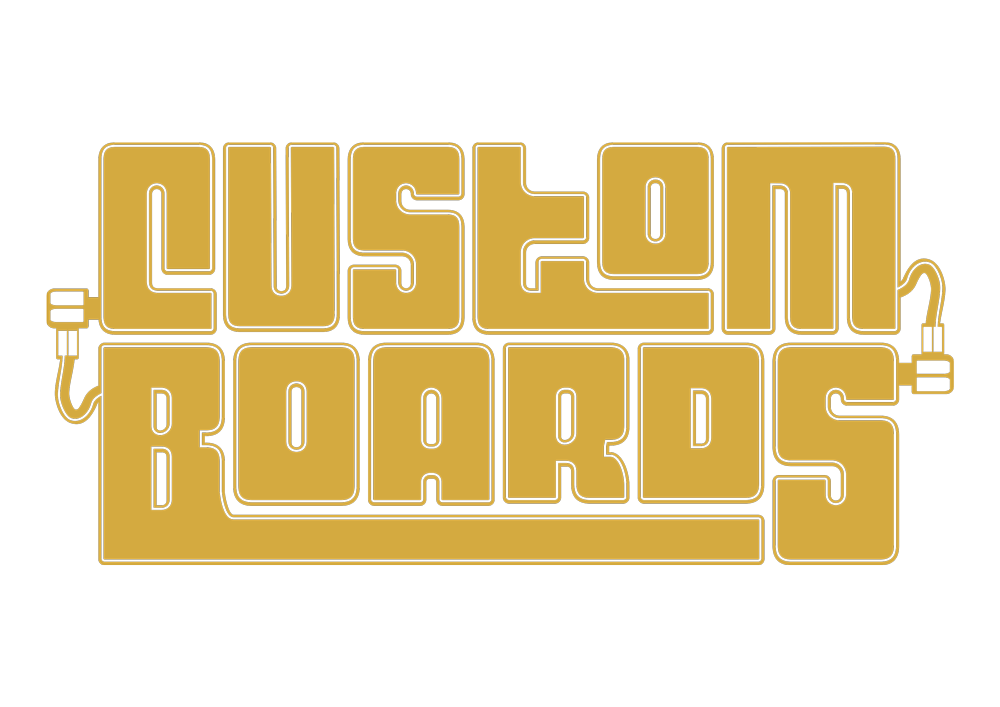The effects loop splits the amplifier in two (Updated 7.2.2024)
One important decision in planning a pedalboard is whether all of your effects will be preceding your amp’s preamp, or if some effects will be put in the amp’s effects (FX) loop. You have to ask yourself:
- Do you use overdriven sounds at all? If you’re playing an amp with a fairly clean sound, FX loop isn’t really necessary to route your effects.
- Do you get your distortion sounds using only the amp’s preamp section or do you also use pedals?
If all of your pedals are placed in front of your amp’s preamp and you drive your preamp into distortion, delays and reverbs can quickly start to sound messy. Of course, this all depends on how much preamp gain you’re using, and on what types of tones you’re after.
What is an effects loop for?
The preamp adds a first amount of amplification to the signal, along with tone-shaping stages, that are most commonly equalizer and presence controls. The preamp’s input is the amp’s guitar input, while its output is the FX loop’s "Send"-jack.  The power amp’s signal chain starts from the FX loop’s "Return"-jack and ends with the speaker output.
The power amp’s signal chain starts from the FX loop’s "Return"-jack and ends with the speaker output. 
For amp repairs the FX loop comes in handy, because it helps you to find out whether it’s the preamp or power amp section that is malfunctioning. You can use a different amp’s power amp to check your preamp, or the other amp’s preamp to feed the power amp.
The FX loop in terms of a signal flow
An FX loop allows you to place signal processors in-between the preamp’s output and the power amp’s input. If your preamp gain is set high for distortion the signal going into the loop will be distorted, too, which makes the effects react stronger in turn.
On the other hand, the output signal from the effects placed in the loop won’t be driven into overdrive by the amplifier preamp. If your amp was designed to produce all its crunch in the preamp section, the power amp’s role is simply to amplify that signal. All modern high-gain amps work like this.
Series or parallel connection
Some FX loops use a buffer amp to prevent signal loss, while others are simply two jacks. On the first look the FX loops of two different amps might look the same, even that there are different ways of designing a functioning FX loop.
Some amps offer parallel loops, which allow you to mix the loop’s “wet” (processed) signal with the dry signal coming off the preamp. To avoid phase cancellations with a parallel loop, some effects units include so-called Kill Dry-option, which routes only the effected signal to the pedal’s output. This way the dry sound is taken solely from the preamp’s output.
 Other FX loops are wired in series and these are called serial loops, which means that all of the signal is routed through the loop. Serial loops can be turned into parallel loops by using a Lehle Parallel SW II unit. Your effect is plugged into the Lehle’s send- and return-jacks. You can now turn your digital effect to Dry Kill-mode, leaving none of the dry signal in the effect unit’s output.
Other FX loops are wired in series and these are called serial loops, which means that all of the signal is routed through the loop. Serial loops can be turned into parallel loops by using a Lehle Parallel SW II unit. Your effect is plugged into the Lehle’s send- and return-jacks. You can now turn your digital effect to Dry Kill-mode, leaving none of the dry signal in the effect unit’s output.

Using the Parallel’s Mix-function you can then add the required amount of digital effect to the analogue amp signal, without having to compromise the integrity of your guitar sound. This way the sound’s analogue signal stays unchanged from start to finish.
Pedals with sensitive inputs
A guitar pickup produces only very small voltages. A single-coil might give out a maximum of one-eighth of a volt, while a humbucker’s reading might amount to half a volt. Many effect pedals have been designed to accommodate these tiny voltages.
A valve amp’s preamp is usually amplifying this signal to somewhere between one and four volts, in order for the power tubes being able to function correctly and drive the speaker.

As long as the output voltage is within the required range, a preamp can also come in the form of a rack unit, or even a pedal. All the power amp needs is a line level signal.
The FX loop’s "Send"-jack is placed at the end of the preamp circuit. The preamp pre-amplifies the guitar signal, which is then send on to the connected effects. Not all effects like to be fed a line level signal, though, because they are meant to be used with a direct guitar signal. Depending on the specific amplifier model a loop’s "Send" might carry anywhere from four to ten volts. Some vintage effects are very sensitive to level changes, like the legendary Uni-Vibe.

These effects tend to clip very quickly, which often makes them unusable even with vintage electric pianos or some hotter humbuckers. No prizes for guessing what happens if you drive a hot FX loop signal into such an effect – the effect’s circuit will literally clog up completely. So make sure to check, whether all of the effects you plan to connect to the loop can really handle your amp’s signal level, before using the loop. Generally, many Boss, Strymon and Eventide effects are designed to handle line signals without problems, which makes them suitable even for use with synthesizers that offer similar output levels to most amps’ FX loops.
The meddling master volume knob
A recipe for trouble is when an amplifier has been designed with a master volume control that sits in front of the loop’s "Send"-jack. Can you imagine what happens to your precious tone, that sounded so great at home with the master at 2, when you set up for a gig and turn the master volume control to let’s say at 4?

At home everything worked fine at very moderate levels, but onstage with the master way up, everything starts to behave very differently. The effects placed in the loop will be fed a much higher signal level, which will have a direct bearing on any and all of the effects’ settings and sounds. This might be the reason for any problems you might be having in getting the effects in the loop to sound the same at different sized venues.

If your master volume messes with your effect sounds you can attenuate it in several different ways. You could use an effect that works well with higher signal levels as the first link in the chain, and use its output knob to drop the signal level to acceptable levels for the rest of the effects in the loop. A more sophisticated solution for this job would be the Lehle Parallel -box mentioned above, which offers input and output controls. This device allows you to drop the incoming signal for your effects, while amplifying the signal you send to the FX loop’s "Return"-jack to the correct level for your guitar amp’s power amplifier.
The FX loop as a booster
If your amp features a buffered FX loop you can use the loop as an additional gain stage, for example as a solo booster.
You can also plug a booster pedal into your loop, which results in the largest possible boost settings, due to the fact that it takes the compressing preamp out of the equation. Plugged into the FX loop, the booster is placed after all gain stages, and boosts directly the power amp. Many booster pedals aren’t meant to be used in a loop, though, because they are meant for coloring the tone of unamplified guitar signal. Probably the best pick for boosting the signal in the FX loop, while leaving the tone intact, would be a Lehle Sunday Driver SW II.

The four-cable method
A common complaint when trying to integrate a pedalboard with an FX loop is the amount of cables running between the board and the backline.

When FX loops were first introduced rack effects were the rage, as were rack preamps and rack power amps. The original idea was to place all the guitar equipment in a single rack, and then use short cables to wire everything up.

But if you’re trying to integrate parts of your pedalboard into the FX loop, allowing you to turn these effects on and off, you will most likely need to run a number of cables from your board to the amp, and back. Some cables are longer than others, turning the whole affair into an unreliable mess and getting on your nerves.
The only sensible way to integrate pedal effects from your pedalboard with your amp’s FX loop is by using a dedicated professional cable loom.

Connecting your pedalboard with your FX loop is achieved by the so-called four-cable method, which means nothing more than that you have to use four cables between your board and your amp:
1. From the wireless receiver next to your amp to the pedalboard.
2. From the pedalboard to the amp’s input.
3. From the FX loop’s Send back to the pedalboard.
4. From the pedalboard back to the FX loop’s Return.

You can also include the AC-cable for your pedalboard in the same loom, getting your power from behind the backline. Alternatively, if you’re not using a wireless system, only three signal cables are required.
We have custom-made many cable snakes for use with our pedalboards, which feature the signal cables for an amp’s FX loop. A loom will make hooking up your rig much faster, easier and neater.
*****
If you have purchased all the parts and components but get a feeling that you might not be up to the task after all, we can make your pedalboard for you, using the components you have bought from us. Don’t worry, we won’t let anything go to waste.

